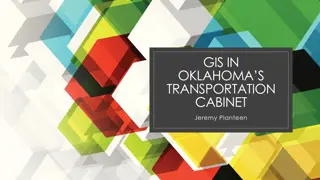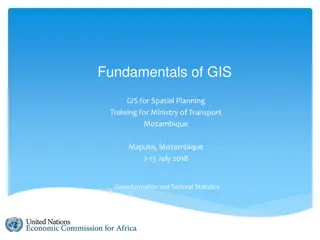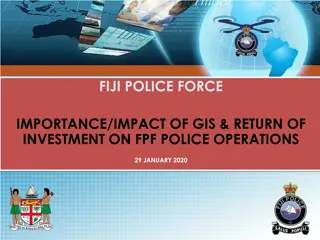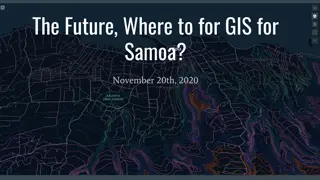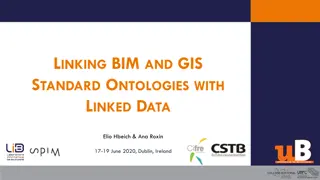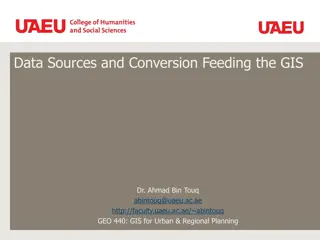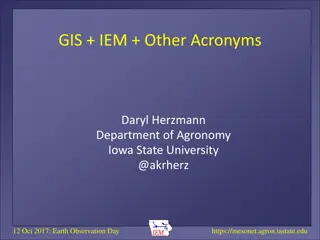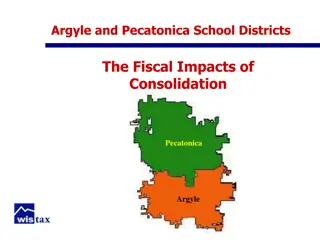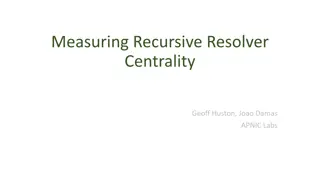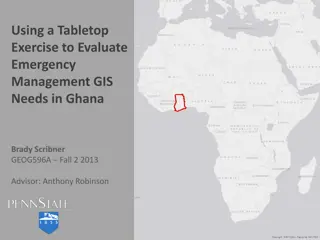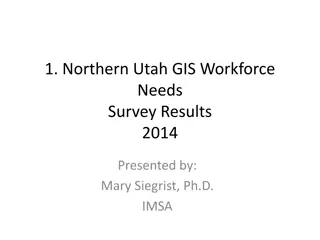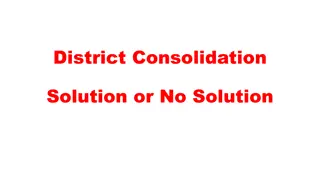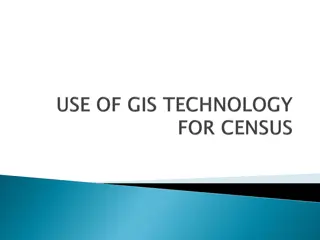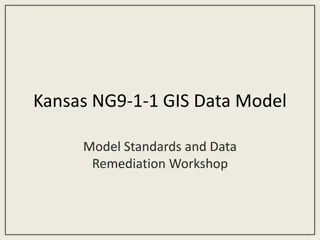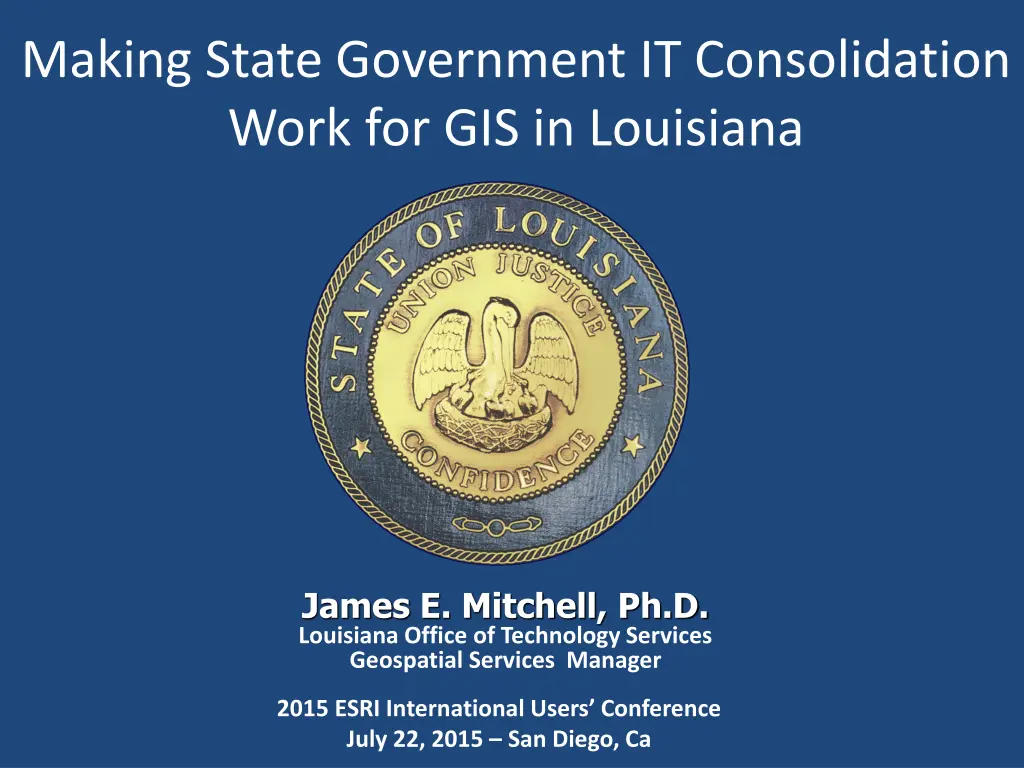
Efficient IT Consolidation Strategies for Louisiana State Government
Explore how Louisiana State Government is implementing IT consolidation to enhance efficiency, reduce costs, and improve service delivery for in-scope agencies. Discover the goals, consolidation approach, and workgroups involved in this comprehensive initiative.
Download Presentation

Please find below an Image/Link to download the presentation.
The content on the website is provided AS IS for your information and personal use only. It may not be sold, licensed, or shared on other websites without obtaining consent from the author. If you encounter any issues during the download, it is possible that the publisher has removed the file from their server.
You are allowed to download the files provided on this website for personal or commercial use, subject to the condition that they are used lawfully. All files are the property of their respective owners.
The content on the website is provided AS IS for your information and personal use only. It may not be sold, licensed, or shared on other websites without obtaining consent from the author.
E N D
Presentation Transcript
Making State Government IT Consolidation Work for GIS in Louisiana James E. Mitchell, Ph.D. Louisiana Office of Technology Services Geospatial Services Manager 2015 ESRI International Users Conference July 22, 2015 San Diego, Ca
In-Scope Agencies Dept. of Children & Family Services Dept. of Economic Development Dept. of Education Dept. of Environmental Quality Dept. of Health And Hospitals Dept. of Natural Resources Dept. of Public Safety & Corrections Dept. of Revenue Dept. of Transportation & Development Dept. of Veterans Affairs Dept. of Wildlife & Fisheries Division of Administrative Law Division of Administration Office of The State Inspector General Governors Office of Homeland Security & Emergency Preparedness Louisiana Public Defender Board Board of Tax Appeals Office of Elderly Affairs Louisiana State Racing Commission Office of Financial Institutions Office of Coastal Restoration & Protection Workforce Commission Youth Services, Office of Juvenile Justice Executive Department Agencies Headed by Elected Officials are Not Included in the IT Consolidation Dept. of Agriculture Dept. of Insurance Dept. of Culture, Recreation, Tourism Dept. of Treasury Dept. of Justice Secretary of State Public Service Comm. Higher Education
Goals of Louisianas IT Consolidation Efficiency Reduce and optimize IT spending per unit by eliminating duplicative systems Improve purchasing power by combining procurements Effectiveness Improve ability to align IT resources with the business priorities of agencies Improve reliability Provide standard delivery of IT services Resource Sharing Greater data sharing to reduce costs and improve services Reduce dependence on redundant and duplicative systems, and processes Strategic allocation of scarce human and financial resources http://reinvent.la.gov
The Three Cs of Consolidation 1. Centralize 2. Centralize 3. Centralize Chad McGee, Louisiana CIO, ca. 2003
Workgroups Spanning the Enterprise Cloud Services Contract Analysis Desktop Leasing Disaster Recovery End User Computing (including Helpdesk & Desktop Support) Enterprise Data Enterprise Storage Floor Space Analysis Geographic Information Systems High Capacity Printing Mainframe Consolidation Managed Print Microsoft Licensing Network and Network Security Oracle Managed Service Organizational Chart Security Server Virtualizations Service Catalog Refinement Staff Survey Statewide Directory Services VoIP Workgroups Under Consideration Database Management Hardware Inventory Records Management Systems Software Inventory SQL Server as a Service
GIS is a Small Part of the Enterprise - So What is the Big Deal? GIS is a platform (Geography as a Platform) GIS links together other elements of the IT infrastructure Databases Web Services Networks (LAN, WAN, Internet and Intranet) Content Management Enterprise Storage GIS needs to interact with Active Directory and security systems
What is Enterprise GIS? It is an environment in which everyone has access to GIS technology that they can use to do their work It is the technology infrastructure to share and support GIS resources inside and outside of the organization Software Hardware Networks, etc. It is the People, Who Do GIS Users who use the GIS environment to fulfil their agency s mission Use GIS technology to create and use GIS data to perform their job functions IT GIS Professionals who maintain the GIS environment Provide and maintain the infrastructure where the data and applications reside Provide training and technical support to users
Where Does GIS Happen? Tablet Users Desktop Users Mobile Users GIS happens in the hands of GIS users!
The GIS User Model User Level Technology Stack 0 1 2 3 Thick Client Thin Client SaaS Primary Technoloy to serve each level of GIS users: IT GIS Thick Client ArcGIS Desktop Thin Client ArcGIS Server and Custom Web apps SaaS AGO, Software as a Service YELLOW Less dominant technology IT Infrastructure ORANGE More dominant technology (Networking, Servers, Storage, etc.) (Updated from Mitchell and Kent, 2007 ESRI UC)
GIS User Level Descriptions Description Level Level-0 Casual User Want to see information on maps (visualization). Primarily consume GIS data. Very little direct interaction with data. Level-1 Occasional User Job functions require visualization of geospatial data to perform their work. May need to perform basic GIS functions or analysis. Level-2 Regular User Work requires use of geospatial data to solve problems that require GIS analysis. May create and edit geospatial data. Level-3 Advanced User Work requires advanced GIS experience to create, edit, and/or model and analyze geospatial data to solve business problems or generate cartographic products. IT GIS IT Professionals with GIS Experience IT staff experiences with geospatial applications, data structures, data management, and GIS application development. These IT staff need to have experience using and applying GIS technology to solve busies problems. Users will determine their own level, based on their job function and requirements
Division of Labor GIS User Responsibilities IT GIS Staff Responsibilities Data-Related Activities o Creating GIS Data o Managing GIS Data o Data Governance Data-Related Activities o Database Administration and Maintenance o Database Replication o Data Services Creation and Administration Cartography-Related Activities o Paper Map Production o Web Map Services Composition o Geospatial Visualization Analysis-Related Activities o Geospatial Services implementation, sharing, and Administration Enterprise-Related Activities o Procurement o Enterprise Architecture o Enterprise Software Management o Enterprise Security o Implement Governance o Software License Administration o GIS Server Administration o GIS Web Services Administration o Technical Support and Training Analysis-Related Activities o Geospatial Analysis o Geospatial Modeling o Report Generation Enterprise-Related Activities o Manage AGO Users o Manage AGO Groups o Manage AGO Roles
Managing Expectations Half of the agencies think IT consolidation will take GIS away from them Half of the agencies think IT consolidation will give them GIS for free. BOTH are wrong!
Myths and Reality GIS Still Happens in the Hands of GIS Users Not IT Misconception Fact No, if your business processes require maps, you need staff trained in your discipline to make them. Now I will have someone to make maps for me. No, there are many ways to share software. You will still have to pay for software you use. Now I will have access to GIS software that I could not afford to buy for myself. No, geospatial analysis, like statistics, BI, and other analytics are very discipline-specific. GIS analysts need to know the discipline in which they work. Now I will have people who can perform GIS analysis and solve our business problems. No, as the authoritative source, you will continue to be responsible for the GIS data from your discipline. It is your data, you control it. Now, I don t need to worry about creating any GIS data.
Benefits for GIS Users Efficiency New Master Purchasing Agreement with ESRI will reduce software Costs Reduced IT spending Improved purchasing power Effectiveness More access to desktop, application, and technical support for agencies that had no GIS programs Improved ability to align IT resources Improved reliability Standardized delivery of IT services Resource Sharing A GIS infrastructure architecture that will provide reliable, up to date, server resources to maintain and share GIS resources through services (Service Oriented architecture) Greater data sharing Reduced redundant and duplicative systems Strategic allocation of scarce human and financial resources
For More information on Louisianas GIS or IT Consolidation Contact: James E. Mitchell, Ph. D. jim.mitchell@la.gov

